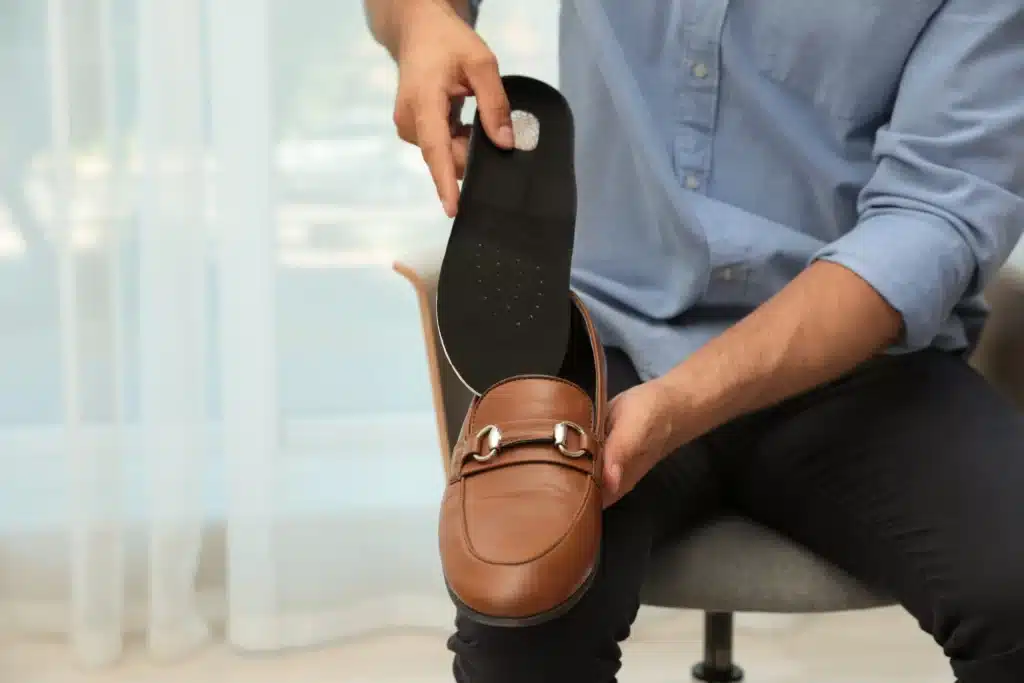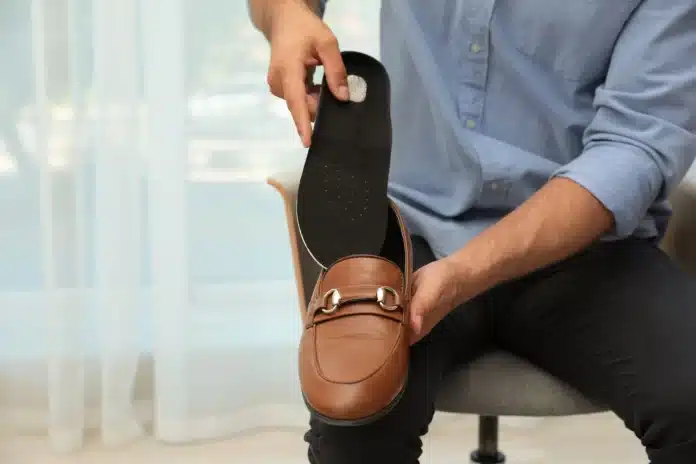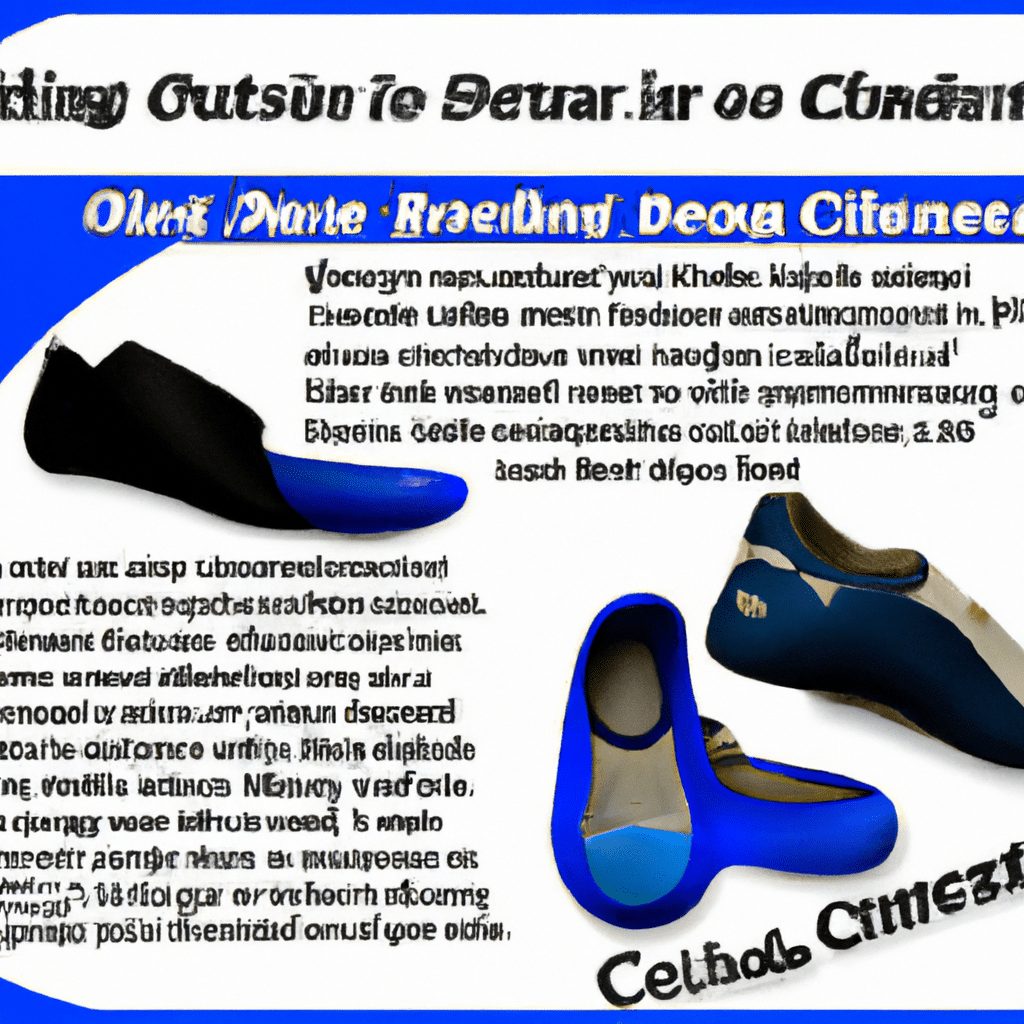Have you ever wondered about the distinction between shoe inserts and orthotics? Our article aims to uncover the specific dissimilarities between these two commonly used foot support options. Whether seeking relief from foot pain or concerned about maintaining optimal foot health, understanding the variances between shoe inserts and orthotics is crucial. By delving into the world of foot care, we hope to enlighten you on the topic and help you make informed decisions for your overall well-being.
Definition of Shoe Inserts and Orthotics
Shoe inserts, also known as insoles or footbeds, are additional padding or support that can be added to the inside of a shoe to provide extra comfort and alleviate foot pain. They are typically made from foam, gel, or rubber and are designed to fit inside the shoe, providing cushioning and support to the foot.
Orthotics, on the other hand, are custom-made devices specifically designed to correct or support foot and ankle alignment. They are often prescribed by healthcare professionals such as podiatrists or orthopedic specialists to treat various foot conditions, including plantar fasciitis, flat feet, and bunions. Orthotics are typically made from more rigid materials and are customized to match the individual’s foot shape and condition.
Function
Shoe Inserts
The primary function of shoe inserts is to provide additional cushioning and support to the foot while wearing shoes. They can help distribute pressure evenly across the foot, reducing the impact on specific areas and relieving pain and discomfort. Shoe inserts can also improve shock absorption, benefiting people who engage in high-impact activities such as running or jumping.
Orthotics
Orthotics serve a more specific function of correcting or supporting the alignment of the foot and ankle. They are designed to address biomechanical issues or structural abnormalities that can contribute to foot pain or dysfunction. By providing the necessary support and alignment, orthotics help to alleviate pain, improve foot function, and prevent further complications or injuries.
Design
Shoe Inserts
Shoe inserts come in various designs and styles to cater to different foot types and preferences. They can be full-length, covering the entire footbed of the shoe, or partial-length, focusing on a specific foot area. Some shoe inserts are also specifically designed for different shoes, such as athletic or dress shoes, to ensure a proper fit and function.
Orthotics
Orthotics are custom-designed to fit the individual’s foot shape and specific condition. They are typically made from more rigid materials, such as plastic or carbon fiber, to provide the necessary support and control. Orthotics can be functional, designed to correct foot alignment and function, or accommodative, designed to provide cushioning and support for specific foot conditions.
Materials Used
Shoe Inserts
Shoe inserts can be made from various materials, depending on their intended function and level of cushioning. Common materials include foam, gel, rubber, and memory foam. These materials provide cushioning and shock absorption, helping to reduce foot fatigue and discomfort.
Orthotics
Orthotics are typically made from more rigid materials like plastic or carbon fiber. These materials provide the necessary support and control to correct foot alignment and function. In some cases, additional materials such as foam or gel may be added to provide cushioning and enhance comfort.
Customization and Fit
Shoe Inserts
Shoe inserts are generally not custom-made and are available in standard sizes that can be trimmed to fit the shoe. However, they may not provide an optimal fit or address specific foot conditions. Some shoe inserts may offer limited customization options, such as arch support or heel cups that can be adjusted to match the individual’s foot shape better.
Orthotics
Orthotics are custom-made to match the individual’s foot shape and specific condition. To create custom orthotics, healthcare professionals will take measurements, scans, or molds of the foot and use this information to design and manufacture orthotics that provide the necessary support and correction. Custom orthotics offer a superior fit and function compared to non-custom options and can provide more effective treatment for foot conditions.
Types
Shoe Inserts
There are several types of shoe inserts available, each designed to address specific foot conditions or provide targeted support:
- Arch Supports: These inserts are designed to provide additional support to the foot’s arch, helping to alleviate pain and discomfort associated with flat feet or high arches.
- Cushioning Inserts: These inserts focus on providing extra cushioning and shock absorption, which can benefit people with sensitive or painful feet.
- Heel Cups: Heel cup inserts are designed to provide support and stability to the heel, reducing pain and discomfort caused by conditions such as plantar fasciitis or heel spurs.
- Metatarsal Pads: These inserts are placed at the ball of the foot and provide cushioning and support to the metatarsal bones, relieving pain and pressure in the area.
- Full-Length Inserts: These inserts cover the entire footbed of the shoe and provide overall cushioning and support for the foot.
Orthotics
Orthotics can be classified into two main categories based on their function:
- Functional Orthotics: These orthotics are designed to correct foot alignment and function. They are typically used to treat conditions such as overpronation or supination, where the foot rolls too far inward or outward during walking or running.
- Accommodative Orthotics: Accommodative orthotics are designed to provide cushioning, support, and relief to specific foot areas affected by conditions such as diabetic foot ulcers, arthritis, or bony prominences. They focus on enhancing comfort and reducing pressure.
Medical Conditions and Foot Conditions Treated
Shoe Inserts
Shoe inserts can be beneficial for various medical and foot conditions, including:
- Plantar Fasciitis: Inserts with arch support and cushioning can help alleviate pain and discomfort associated with plantar fasciitis.
- Fallen Arches: Arch support inserts can support flat feet, reducing pain and fatigue.
- Metatarsalgia: Inserts with metatarsal pads can help relieve pain and pressure in the foot ball.
- Bunions: Inserts with cushioning and toe spacers can help alleviate pain and reduce friction on bunions.
Orthotics
Orthotics are prescribed for a wide range of foot conditions, including:
- Flat Feet: Custom orthotics with arch support can help correct foot alignment and provide necessary support for individuals with flat feet.
- High Arches: Orthotics with cushioning and shock absorption can help reduce the impact and pressure on the feet for individuals with high arches.
- Plantar Fasciitis: Custom orthotics can provide proper support and alignment to relieve pain and promote healing of the plantar fascia.
- Achilles Tendonitis: Orthotics with heel lifts or wedges can help reduce strain and tension on the Achilles tendon, aiding in healing.
Uses
Shoe Inserts
Shoe inserts can be used in various types of shoes, including athletic, casual, and dress shoes. They are commonly used by individuals who experience foot pain or discomfort during activities or prolonged standing. Shoe inserts can provide immediate relief and improve overall comfort while wearing shoes.
Orthotics
Orthotics are primarily used in everyday shoes or sports-specific footwear. They are often worn for an extended period to provide continuous support and correction throughout the day. Orthotics are particularly beneficial for individuals with persistent foot pain or chronic foot conditions requiring ongoing alignment and support.
Cost
Shoe Inserts
The cost of shoe inserts can vary depending on the brand, materials used, and level of customization. Standard shoe inserts purchased in stores or online can range from $10 to $50. However, custom shoe inserts offer a better fit and function and can cost anywhere from $100 to $500.
Orthotics
Custom orthotics are generally more expensive than standard shoe inserts due to the additional customization and professional expertise involved. The cost of custom orthotics can range from $200 to $800, depending on factors such as the materials used, the complexity of the design, and the healthcare professional’s fees.
Availability
Shoe Inserts
Shoe inserts are widely available in stores, pharmacies, and online retailers. They can be purchased without a prescription and are often offered in various sizes and styles to accommodate different foot types and shoe sizes. However, it may be beneficial to consult with a healthcare professional or foot specialist for individuals with specific foot conditions or needing more customized support.
Orthotics
Orthotics are typically prescribed by healthcare professionals such as podiatrists, orthopedic specialists, or sports medicine doctors.

They are custom-made based on the individual’s foot measurements and conditions and require a professional assessment to ensure proper fit and function. Orthotics can be obtained through specialized orthotic clinics or healthcare facilities, where the necessary measurements and fittings are conducted.








































